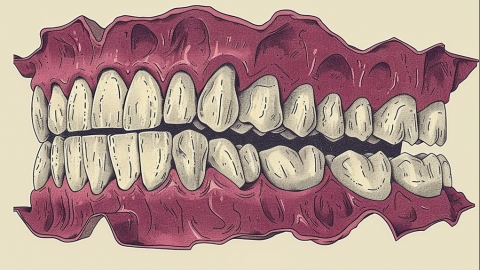What should I do about black discoloration between my teeth and gums?
Generally, black discoloration at the junction of teeth and gums may be related to factors such as pigmentation, dental calculus buildup, dental caries, gingivitis, and periodontitis. Treatment options include routine care, medication therapy, and physical therapy, under the guidance of a physician. If treatment is necessary, it is recommended to visit a qualified hospital. Detailed explanations are as follows:

1. Pigmentation
Long-term consumption of pigmented beverages such as coffee and cola, or frequent intake of dark-colored foods like chocolate and soy sauce, can cause pigments to adhere to the area where teeth meet the gums. Failure to brush thoroughly may result in black discoloration in this area. It is recommended to reduce consumption of these foods and drinks, and to regularly use dental floss to clean between teeth to prevent pigment residue.
2. Dental Calculus Buildup
Food debris and soft plaque in the mouth gradually calcify under the influence of minerals in saliva, forming hard dental calculus. Calculus typically accumulates at the gumline and appears dark due to its color and the presence of adhered plaque and pigments. Maintaining good oral hygiene, rinsing the mouth promptly after meals, and undergoing regular dental checkups and cleanings at a hospital are recommended.
3. Dental Caries
Dental caries are usually caused by poor oral hygiene. Food debris decomposes and produces acid that erodes teeth over time, leading to demineralization and breakdown of tooth hard tissue, forming cavities. When cavities occur near the gumline, they may appear black due to the presence of decomposed food debris, bacteria, and their metabolic products. Symptoms may include tooth pain in response to cold, heat, sour, or sweet stimuli, and pain from food impaction. For shallow or moderate caries, decayed tissue should be removed and the cavity restored with resin material, following medical advice. For deep caries, root canal treatment may be performed as directed by a physician.
4. Gingivitis
Gingivitis is often caused by local irritants such as dental plaque, calculus, and food impaction. In an inflamed state, capillaries in the gums dilate and become more permeable, leading to blood extravasation. When red blood cells rupture, hemoglobin breaks down, releasing hemosiderin, which deposits at the gum margin, causing black discoloration at the tooth-gum junction. Symptoms may also include redness, swelling, and bleeding of the gums, as well as bad breath. Under medical guidance, medications such as hydrogen peroxide solution, metronidazole tablets, and amoxicillin capsules may be used to reduce inflammation.
5. Periodontitis
Periodontitis is typically caused by long-term irritation from bacteria and toxins in dental plaque affecting periodontal tissues. Inflammation leads to the formation of periodontal pockets, which contain exudates, bacteria, and food debris. The mixture of these substances can cause black discoloration at the tooth-gum junction. Symptoms may also include gum recession, tooth mobility, and displacement. Under a doctor's recommendation, medications such as minocycline hydrochloride tablets, cephalexin capsules, and ibuprofen sustained-release capsules may be used for combined anti-infective treatment.
In daily life, excessive consumption of pigmented foods should be avoided, and oral odor should not be ignored. Bad breath should be promptly investigated and addressed. Additionally, toothbrushes should be replaced regularly to ensure clean and hygienic oral care tools, preventing black discoloration at the tooth-gum junction.








